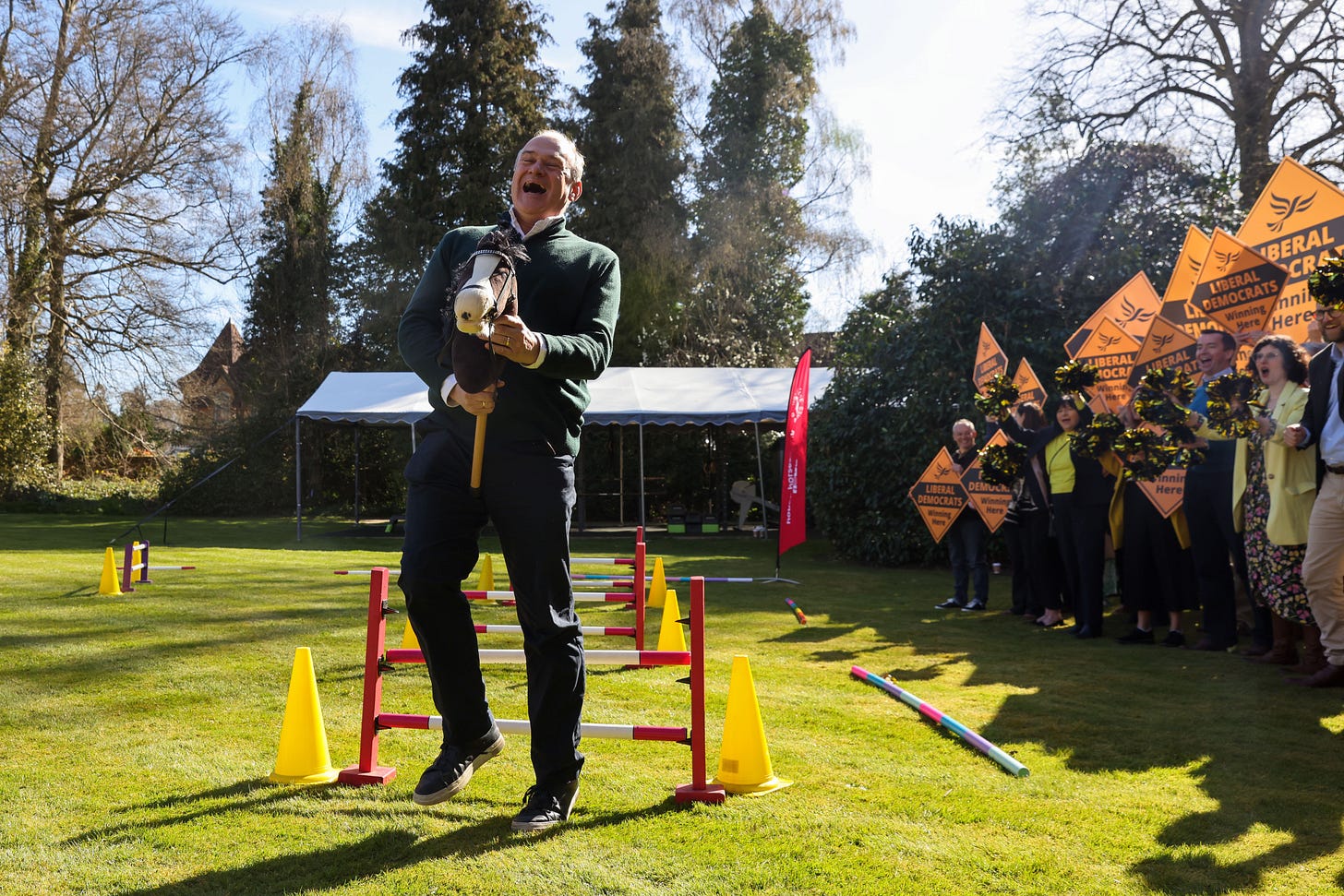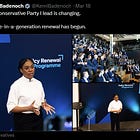Welcome to the 155th edition of The Week in Polls (TWIP) which takes a look at the different approaches pollsters take towards Liberal Democrat leader, Ed Davey.
Then it is a summary of the latest national voting intention polls and a round-up of party leader ratings, followed by, for paid-for subscribers, 10 insights from the last week’s polling and analysis.
This time, those ten include some polling about potholes.
If you are not yet a paid-for subscriber, you can sign up for a free trial now to read that and all the other stories:
And with that, on with the show.
Want to know more about political polling? Get my book Polling UnPacked: the history, uses and abuses of political opinion polling.
The different approaches pollsters take to Ed Davey

Of course, you might reasonably expect - and discount or even disagree with - me being a bit grumpy now and again about how much attention a media outlet or a pollster decides to give to my own party’s leader, Ed Davey.
The Observer and Opinium did, however, take a very unusual approach recently as summarised in my letter to The Observer:
Your latest opinion poll from Opinium asked the public if they trusted six different politicians on the economy. Yet your write-up (“All UK families ‘to be worse off by 2030’ as poor bear the brunt, new data warns”, 23 March) only mentions five of them.
Not only is one left out, they are the one who comes out best in the poll, with a net rating a full 16 points better than the second placed. They also come out best of all the party leaders on overall approval ratings in your own poll. But they do not get named at all in your write-up of it.
That unnamed person who tops the poll? Leader of the Liberal Democrats, Ed Davey.
This was not simply a case of the newspaper dropping Ed Davey as the pollster also excluded Davey’s figures its own press release, though the data did go up on its website)
There is, I am sure, a range of views about whether or not it makes sense to include Ed Davey in a question which features other party leaders. But to include him, find he comes out best and then to exclude him from the write-up is… odd.
Odd, but also not rare.
Because here is the pattern across pollsters in their polls so far this year, looking at whether or not they include Ed Davey in their battery of leader approval rating questions,1 and if they do whether or not they include him alongside other leaders in their own write-ups, the graphs the produce and the social media messages they post about the results.
Of those pollsters who have run leader approval ratings this year, all bar Deltapoll have included Ed Davey at least once.
For those that do include him, the overall picture is of him consistently coming out best on net approval scores.
Given the politically slanted editorial lines of various media outlets, it is perhaps not a surprise that this picture often does not get reflected in media coverage. But with pollsters too - who are in full control of what the put out about their own polls - this picture often does not get relayed.
Ipsos (consistently) and Find Out Now (in their one leader rating outing so far this year) feature clearly in their own output the net approval scores, including Ed Davey’s. So if you follow polling by consuming their output, you get the overall picture.
But at the other end, with JL Partners and Lord Ashcroft, you have to follow the links to their data files and dive into the spreadsheets yourself to find out that Davey comes out on top. Similarly, BMG mostly do not include their leader ratings findings in their own output, but when they have so far, the Ed Davey net rating has been omitted.
In between those two extremes come More in Common and Opinium. Neither give consistent prominence to Ed Davey topping their net approval ratings, though both give this finding just enough coverage that were this paragraph to be too critical the pollsters could fill up my inbox with emails saying ‘I think you may have missed this link Mark…’.
Both regularly produce graphs showing the data for other leaders, but not for Ed Davey. More in Common’s website coverage is primarily its graphs and so he is missing from there too, although most recently some social media mention has occurred. For Opinium, Davey is consistently not in the graphs or the social media threads, but he features in the lower profile write-up on their own website.
As for YouGov, although it does much writing up of its polls, it rather infrequently writes-up or publicises its own leader net approval findings. When it does, there is a definite skew towards featuring some other leaders more prominently but Davey does get a look in. (In this story, he does not get a graph of his own but does feature in the combined multi-leader graphic.)
Now, of course you might expect me to be keen to puff up news about Ed Davey (such as, ahem, more people saying they have not heard of Kemi Badenoch than say they have not heard of Ed Davey according to BMG, or the Ipsos data giving Ed Davey the best net score on whether he would be a good or bad PM).
Even so, I think it fair to point out just how odd it is that pollsters repeatedly ask questions that have Ed Davey come out best on net rating and then much of the time rather bury the result.
Perhaps you think that what the public thinks of him doesn’t really matter. I would respectfully disagree, but the logical conclusion then is to drop him from your poll. To think him important enough to poll but not important enough to cover is, well … odd.
All of which makes me wonder what a pollster would find if they ask people who they think comes out top on net approval ratings…
Voting intentions and leadership ratings
Here are the latest national general election voting intention polls, sorted by fieldwork dates, with Find out Now becoming rather an outlier:
Next, a summary of the the leadership ratings, sorted by name of pollster and which shows Starmer’s previous ratings bump fading away:
For more details, and updates during the week as each new poll comes out, see my regularly updated tables here and follow The Week in Polls on Bluesky.
For the historic figures, including Parliamentary by-election polls, see PollBase.
Quarterly council by-elections summary
Time for my quarterly look at what voters are writing on their ballot papers rather than what they are telling pollsters:
Catch-up: the previous two editions
My privacy policy and related legal information is available here. Links to purchase books online are usually affiliate links which pay a commission for each sale. For content from YouGov the copyright information is: “YouGov Plc, 2018, © All rights reserved”.2
Quotes from people’s social media messages sometimes include small edits for punctuation and other clarity.
Please note that if you are subscribed to other email lists of mine, unsubscribing from this list will not automatically remove you from the other lists. If you wish to be removed from all lists, simply hit reply and let me know.
How voting intentions vary depending on someone’s top issue, and other polling news
The following 10 findings from the most recent polls and analysis are for paying subscribers only, but you can sign up for a free trial to read them straight away.
More in Common data shows how voting intentions vary depending on which
Keep reading with a 7-day free trial
Subscribe to The Week in Polls to keep reading this post and get 7 days of free access to the full post archives.








